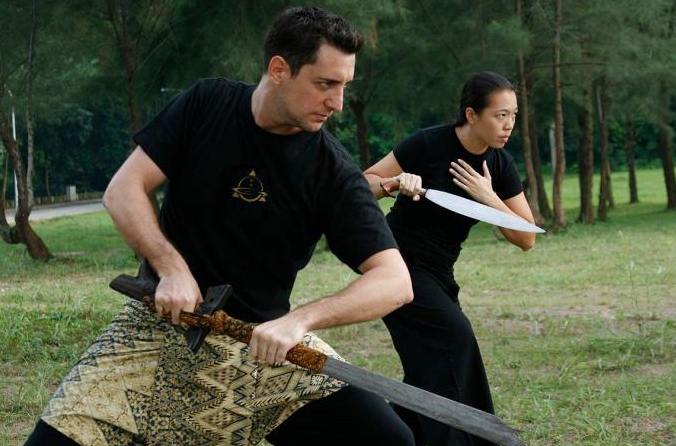Kali is typical of the FMA – the techniques are done with sticks and empty hands as well, but all are derived from the original movements done with blades. We spend a lot of time in Kali Majapahit using our knives, with the resulting improvement seen in everything else we do.
There is no intention for any of us to become knife killers, but rather through study we learn about the unique Filipino culture and their attitudes towards combat, which were based on blades.
The training also develops superior focus, concentration, and peripheral vision. Getting attacked with a knife by someone who knows how to use it is a scary situation.

Karambit Vs Knife
Some key take-aways from our training:
1) Keep your hands tight to your body
Don’t let your arms wave around. It just makes it more likely that you will get cut or be out of place. Keep your arms close to your upper body forearms facing outward (protecting vital organs of your torso while at the same time hiding arteries and veins in the arms) when not active.
2) Think SMALL
Keep all actions minimal. Fear will make your motions exaggerated. Success depends on precision.
3) Protect the Big Stuff; use the Outside
Blocking should be done with the outside of the arms, NEVER the inside of the arms. The inside is where all the key arteries and veins are, and this needs to stay protected.
If you are cut on the outside of the arm it is less likely to result in a lethal wound.
4) Focus on the MAN, not the knife
There is a tendency to develop tunnel vision and stare at the knife – staring at it won’t make it go away. Knife or not, the attacker is the target. Keep your attention trained on the center of the shoulders/middle of the chest so you can see attacking motion develop.
This also means staying out of the way of the attacker’s free hand (the one not holding the knife). Just because it has no knife does not mean it is not dangerous.
5) Watch your Lines
Make sure you move your whole body, not just your arms/upper body, out of the way of the knife. Many times a deflected cut to the body ends up cutting the leg instead.
Thus, when defending you need to make sure your whole body is out of the cutting line. We say “Stand in one place; die in one place”.
6) Finish Up
Like every Kali situation, if you need to use it, you need to use it properly. Finish your opponent completely. A knife situation is potentially lethal. No time to be nice or merciful.
There are many cases of fatally wounded attackers still managing to kill their victim before they go out. Make sure the attacker GOES DOWN and STAYS DOWN. If you are ever in a knife fight be intent on surviving.
 7) Sink the Blade; Sink the Man
7) Sink the Blade; Sink the Man
When you have the knife…many classic texts on knife fighting emphasize that while slashing/cutting can kill; stabbing is a far higher percentage stop.
The goal is to get a torso stab. In either case, putting the attacker on the ground (via takedown/sweep) is important since it greatly reduces the chance for the attacker to recover.
8) Practice Practice Practice
Train these responses a lot. They will help your empty-hands skill too. This is the real deal. Focus. Make sure you are the one that walks away.
(Originally published in FMA Digest – Permission given by FMA Digest)





















